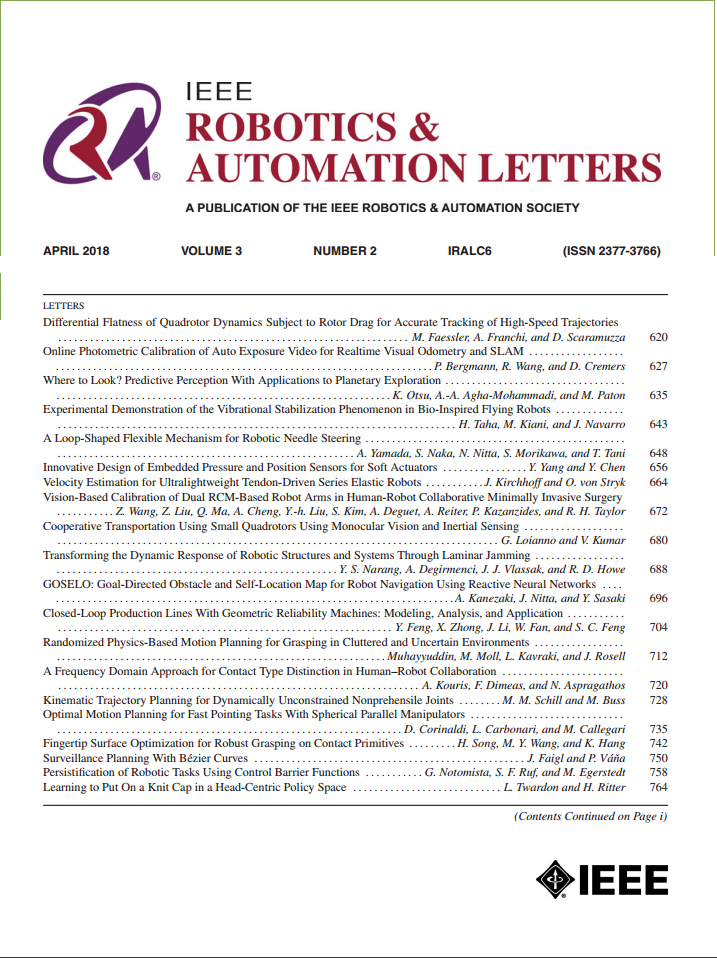基于迭代局部搜索和改进粒子群融合的室内地磁匹配定位
IF 4.6
2区 计算机科学
Q2 ROBOTICS
引用次数: 0
摘要
在复杂的室内环境中,地磁匹配是实现移动机器人室内定位的有效途径。针对粒子群优化(PSO)算法的应用导致地磁匹配精度、稳定性和收敛速度下降的问题,提出了一种迭代局部搜索-改进粒子群优化(ILS-IPSO)算法。通过分析地磁测量数据的时频特征和数据分布特征,进行了地磁数据预处理和地磁参考图件制作。通过在粒子群优化过程中引入3${\bm{\sigma}}$轮廓搜索域约束,对粒子群优化算法的权重因子、学习因子、步长控制因子进行优化,最后结合迭代局部搜索(ILS)算法实现局部扰动和局部搜索。实验结果表明,ILS-IPSO的平均匹配精度误差减小到0.0508 m,匹配误差的标准差减小到0.0198m。与PSO、线性动态时变惯性权粒子群优化算法(LDIW-PSO)和余弦递减惯性权粒子群优化算法(CDIW-PSO)相比,平均匹配精度分别提高了94.72%、92.37%和87.98%,匹配误差标准差分别降低了87.13%、83.26%和89.81%。ILS-IPSO算法的最优适应度分别提高了79.51%、61.81%和57.06%,迭代效率分别提高了69.23%、55.56%和33.33%。该方法具有较好的地磁定位精度、稳定性和收敛性,可广泛应用于室内定位领域。本文章由计算机程序翻译,如有差异,请以英文原文为准。
Indoor Geomagnetic Matching Location Based on Iterative Local Search and Improved Particle Swarm Fusion
In the complex indoor environment, geomagnetic matching is an effective way to realize indoor positioning of mobile robots. Aiming at the problem that the application of Particle Swarm Optimization (PSO) algorithm leads to the decline of geomagnetic matching accuracy, stability and convergence speed, an Iterated Local Search-Improved Particle Swarm Optimization (ILS-IPSO) algorithm is proposed. By analyzing the time-frequency characteristics and data distribution characteristics of geomagnetic survey data, geomagnetic data preprocessing and geomagnetic reference map construction are carried out. By introducing 3${\bm{\sigma }}$
求助全文
通过发布文献求助,成功后即可免费获取论文全文。
去求助
来源期刊

IEEE Robotics and Automation Letters
Computer Science-Computer Science Applications
CiteScore
9.60
自引率
15.40%
发文量
1428
期刊介绍:
The scope of this journal is to publish peer-reviewed articles that provide a timely and concise account of innovative research ideas and application results, reporting significant theoretical findings and application case studies in areas of robotics and automation.
 求助内容:
求助内容: 应助结果提醒方式:
应助结果提醒方式:


